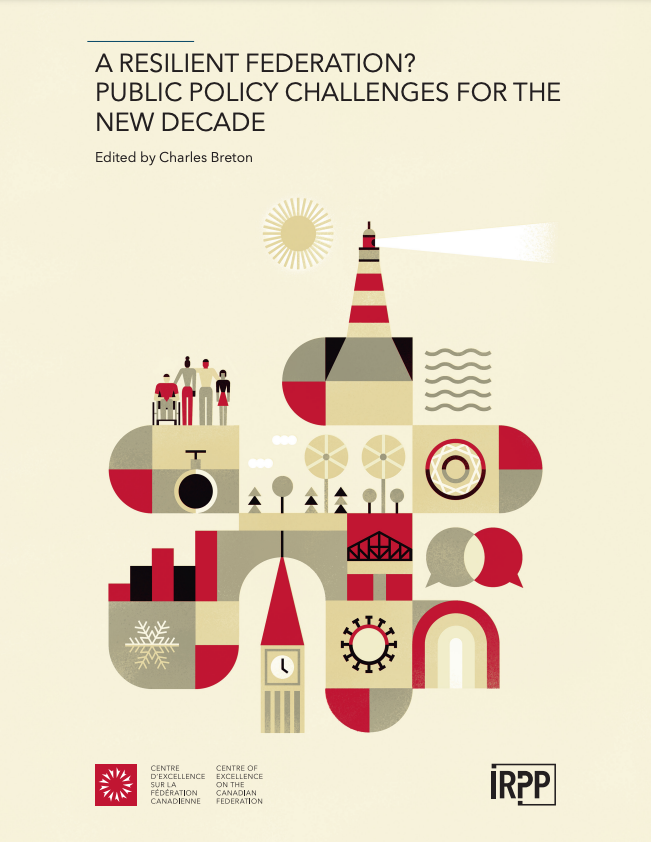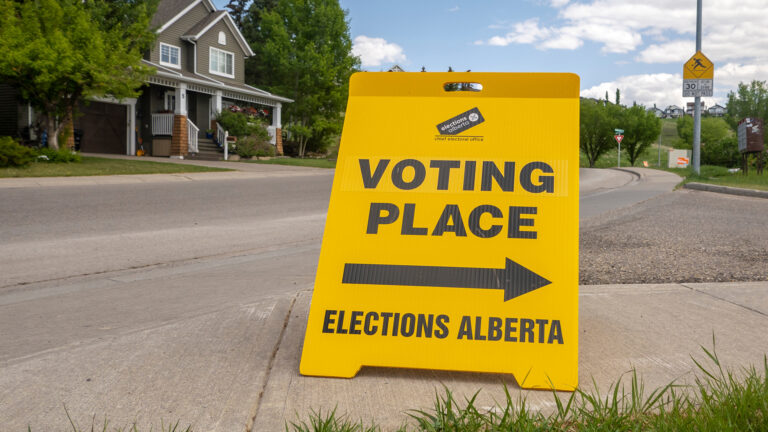Strengthening Canada’s Fiscal Resilience
Introduction
One of the greatest sources of Canada’s resiliency in recent years has been the public sector’s ability to borrow. It allowed us to run countercyclical deficits during the global financial crisis and to build bridges for struggling businesses and households during the current pandemic. But this capacity varies considerably across orders of government. The federal government is in a far better position than the provinces to stabilize its debt-to-GDP ratio. It is also less vulnerable to credit shocks. This asymmetry is not unique to Canada. Still, it poses special risks for us because of our unparalleled stock of subnational debt.
Canada needs to gradually stabilize provincial borrowing, while ensuring other policy goals, including the provision of adequate services, investment and fiscal stabilization, are met. Unlike the 1990s, low interest rates will help policy-makers reconcile these objectives. But low interest rates will not be enough. We also need to find ways to bolster provincial fiscal capacity while strengthening incentives for fiscal discipline. That was true before the pandemic sent deficits soaring. It will be even truer as the economy recovers.
I propose a two-pronged approach: a significant increase in federal transfers and the establishment of a conditional bailout facility to finance provincial deficits at federal interest rates. The additional transfers would boost provincial fiscal capacity. The bailout facility would require applicants to agree to a fiscal consolidation plan. The first piece would signal Ottawa’s willingness to support provincial revenues. The second would define the limits of that support and the conditions for seeking more.
The Size and Sources of Provincial Debt
The provinces entered the crisis with the world’s highest gross subnational debt as a percentage of GDP. Even more worrying than the level was the trend. The provinces had yet to recover from the global financial crisis when COVID-19 struck. Their debt ratio in 2018 was 43 percent of GDP, nearly 50 percent higher than the ratio prior to the global financial crisis. Now provinces are forecasting a collective deficit of over 4 percent of GDP. This is significantly higher than anything we saw after 2008.
Why are provincial debts so high? The sources are numerous, but three stand out: (1) rigid and open-ended expenditures, especially on health care; (2) cyclical revenue streams, including income tax, sales tax and resource royalties; and (3) their ability to borrow at low interest rates and without federal restriction. The first source puts steady upward pressure on spending. Sources 2 and 3 make provincial budget balances vulnerable to shocks. Source 3 allows provinces to finance structural and cyclical shortfalls with debt.
But how, if provincial debts are so high, do provinces manage to borrow so cheaply? One reason is the secular plunge in global interest rates. Another is the assumption, widely held among investors, that Ottawa is unlikely to let a province default. A provincial default could have severe consequences for Canada’s economy, given the massive presence of the provinces in capital markets. It would also undermine Ottawa’s capacity to realize its social welfare commitments given the integration of federal and provincial welfare states. Many provincial bondholders are betting, therefore, that if provinces do not keep them whole, Ottawa will.[1] This does not elevate provinces to the status of federal borrower, but it does increase their borrowing capacity significantly.
Should We Be Worried?
Provincial debts now exceed their previous 1996 peak, a scary thought for academics and policy-makers who cut their teeth in the early 1990s. Deficits were soaring, provincial credit ratings were plummeting, and Saskatchewan and Newfoundland were struggling to roll over their debt. But interest rates are much lower today, so much so that provincial interest payments to GDP have been relatively flat since the shock of 2008. Clearly, the provinces can shoulder higher debts than ever before.
But should they? This is a harder question. On the one hand, there is no question that governments should borrow more and for longer, and not just because they are in the midst of a pandemic. Many believe COVID-19 has merely accelerated the long-term trend of advanced economies toward a state of “secular stagnation”.[2] Business investment has been languishing for years. The recent shock will only depress it further. The lockdowns may also lead to a structural decline in household spending, as demand for precautionary savings grows. The consequence is a low-growth, low-inflation, and low-interest rates environment likely to extend well beyond official lockdowns or the discovery of a vaccine. Central banks cannot fix the problem. Their principal stimulant, the interest rate, is already at zero. Only fiscal authorities can provide stimulus and they are under growing pressure to increase public investment as well. Borrowing is not without risk in this environment. Interest rates and inflation may rise. But the balance of risks clearly recommends larger deficits and longer paths to fiscal balance.
On the other hand, it is not clear how provincial borrowers should conduct themselves. The textbook rules for subnational borrowing (limiting borrowing to investment and a modest degree of tax smoothing) have never applied to provinces. They are too powerful and too consequential to the macro economy for that. But they are not central government borrowers either. Their bonds are less liquid or easy to trade on secondary markets. They are also less creditworthy. That is partly because provinces rely on a narrower and more volatile set of tax bases. More importantly, it is because they do not run their own central bank. The provinces cannot rely on the electronic printing press in the event of a liquidity crisis. They have to generate cash through taxes and other less certain means. Bailout expectations compensate for that asymmetry to some extent, but there is always some possibility that Ottawa or the Bank of Canada will fail to pull a teetering province from the brink. Their borrowing conditions reflect that fact.
Three implications follow. First, the provincial sector is more vulnerable to credit shocks. The provinces pay an additional interest rate spread over what the federal government pays. That spread increases when financial volatility rises and investors seek safety and liquidity in federal bonds. Federal interest rates typically fall during these periods, often bringing provincial rates down with them. But provincial rates never fall as aggressively and the additional spread prevents the provinces from fully exploiting Canada’s safe-haven status. If market volatility becomes too extreme, it can even become difficult to price and issue provincial debt. We saw this for brief periods during the global financial crisis, the commodity bust of 2015-16 and the stock market meltdown of early 2020.[3]
Second, Ottawa is in a much better position to stabilize its debt. Canada’s long-run economic growth rate has exceeded the long-run federal interest rate for much of the country’s history.[4] That means Ottawa can potentially lower its debt-to-GDP ratio without ever running a surplus. Some provinces have also borrowed at rates lower than the long-run economic growth rate in recent years. But Ottawa’s superior credit standing and diversified economy make it a better bet for a favourable ratio of long-term growth to long-term interest rates going forward.
Third, the vulnerability of provinces, along with the scale of their spending and debt, alters the country’s relationship with capital markets. It makes our public sector more vulnerable to credit shocks and rising interest rates than our more centralized peers. It also makes us more vulnerable to the austerity those changes can trigger.
Provincial vulnerabilities should not be exaggerated. The provinces benefit from rock- bottom interest rates and a robust fiscal union. Imagine what shape their budgets would be in without Ottawa’s emergency support to businesses and households. And, since April 2020, the Bank of Canada has been buying significant quantities of provincial short- and long-term debt. This will help stabilize provincial borrowing conditions the next time financial turmoil strikes.
But central bank interventions are primarily liquidity, not solvency, devices and they have not fully insulated provinces from global shocks.[5] We also need to appreciate that provincial borrowing capacity stems, in part, from investors’ bailout expectations. Those expectations lower spreads in the short run, but they encourage more borrowing. That is not a big deal if interest rates remain low; Ottawa’s fiscal capacity remains robust; and bond buying does not interfere with the Bank of Canada’s other policy objectives (which it could in a more inflationary environment). But the additional debt may increase the odds of austerity if one or more of these conditions shift. It also chips away at Ottawa’s credit standing. This is a slow process given Ottawa’s credit strengths.[6] We caught a glimpse of it in June when Fitch, one of the big three international credit rating agencies, cited rising provincial debt and the multilevel challenges of containing it as a risk to Canada’s fiscal health.
In short, provinces can and should borrow more than they did in the 1990s. They should also adopt a slower path to fiscal consolidation. But their debts are uncomfortably high given the sector’s vulnerabilities and the broader national risks. How do we then put them on a more sustainable path?
Reforming the Transfer System[7]
The answer depends, in part, on the source of provincial deficits. Many think it is the vertical fiscal imbalance. The provinces are responsible for the brunt of fixed and open-ended expenditures, while the federal government enjoys a disproportionate share of the revenue-raising capacity and space. A natural solution, therefore, is to transfer a larger share of federal revenues to the provincial level.[8] These proposals often come in two forms: one-off transfers to help provinces with the pandemic and the economic recovery, and longer-term measures to address their structural and cyclical deficits. The former includes the $19 billion the federal government has committed to help provinces restart their economies. The latter includes a larger, needs-based Canada Health Transfer, particularly for provinces with aging populations, and an enhanced Fiscal Stabilization Program to offset provincial revenue shocks.[9]
How likely is the federal government to adopt these or similar reforms? Given its own bulging deficit, a repeat of 1995, when it slashed provincial transfers, may seem like a more likely post-pandemic response. But most of the deficit spending is temporary and interest rates are likely to remain low for some time. Ottawa will have to make fiscal adjustments, but it has far more fiscal space than many assume. Political conditions also seem ripe. The federal government was poised to enhance the Fiscal Stabilization Program before the pandemic. The crisis has piqued federal interest in several areas of provincial jurisdiction, including child care and long-term care.
A bigger role is not a given. Several provinces objected to the conditions attached to the restart funds. Similar resistance may dampen federal enthusiasm to provide further support. Eventually, Ottawa may also come under pressure to rapidly consolidate its deficit, if not from bond markets, then from political forces.
There is also no guarantee additional transfers would work. Cross-national evidence shows higher transfers often increase deficits, particularly if they shield (or appear to shield) borrowers from irresponsible choices.[10] Pandemic-related transfers are temporary and unlikely to create this perception. Ottawa can also mitigate moral hazard, as it usually does, by allocating recurring transfers according to clear and fixed criteria. But the pressure for bailouts will be high and no amount of fiscal engineering will substantially lower investors’ bailout expectations. Additional transfers may increase the capacity to balance provincial budgets, provided the associated conditions do not create undue pressures for additional spending. Incentives are another matter.
National Fiscal Constraints
The provinces are not the only federal units that borrow with an implicit guarantee. But they are one of the few implicitly backed sectors that borrow without national constraint. These constraints often arise precisely because of bailout beliefs. Markets allow units to borrow more than they can sustain, a bailout arrives and the centre demands a degree of fiscal restraint in return. This process has played out in several federations, including Germany and Brazil. It has yet to materialize in Canada, despite the provinces’ periodic market struggles. Why?
First, Canada is a deeply federal society with powerful provincial governments. A conditional bailout would be met with about as much enthusiasm as a structural adjustment from the International Monetary Fund. Canadian governments have generally tried, therefore, to avoid it. In 1936, Alberta’s Social Credit government took avoidance to the extreme. It opted to default rather than accept the supervision of a federal loans council (a condition of the next bailout).
Another obstacle is institutional. Renegotiating intergovernmental burdens is challenging in any federation. Certain institutions, notably a vertically integrated party system, can help facilitate and enforce the bargains.[11] Canada lacks this institutional machinery.
Neither obstacle would matter if provinces faced a prolonged debt crisis. They would have to accept Ottawa’s dictates or default. But it is not clear, outside of a situation like the Great Depression, when that might arise. Saskatchewan flirted with default in 1993, but quickly turned it around with a small, unconditional bailout from Ottawa, which allowed it to maintain its investment grade credit rating.[12] It also undertook a series of austerity measures[13] motivated, in part, by the fear of requiring a larger and thus conditional level of federal support.Saskatchewan’s response was a natural one in a country that avoids centralization at all costs. But it is precisely the sort of abrupt and ad hoc adjustment that we ought to avoid. How can we get ahead of the next crisis?
Reconciling Fiscal Capacity and Discipline
One possibility is the establishment of a conditional bailout facility to lend at federal rates. If it is established soon, it could lend unconditionally until the recovery is well under way. Beyond that, it could require recipients to commit to a fiscal consolidation plan. An independent third party could monitor compliance, which might ease provincial opposition and commit both parties (federal and provincial) to the bailout terms. If the federal government launched the facility with an expanded set of transfers, the message would be clear: The federal government would be available to assist the provinces, but there would be limits to that support, and there would be no free bailouts for provinces that failed to live within them.[14]
Consolidation plans imply a loss of provincial autonomy, but the use of the facility would be voluntary. The stigma of application alone might provide enough incentive to avoid it. None of this will satisfy ardent decentralists. But it is a reasonable compromise, given the costs and risks of provincial bailouts and debt.
Another objection is that the scheme would transform the federal government into the International Monetary Fund, allowing it to impose austerity on vulnerable populations through conditional loans. But combining the facility with additional transfers, including ones that reflect differing spending needs, should disabuse many of those beliefs. It would also be an improvement over Ottawa’s approach in 1995, when it slashed provincial transfers and left the disciplining to bond markets.
None of this would be easy. Fiscal rules would have to be robust enough to stabilize provincial debt. They would also have to be general and flexible enough to protect provincial autonomy, accommodate swings in business cycles and ensure adequate levels of public investment. We would also need to monitor compliance and commit federal and provincial governments to consolidation plans. These are daunting collective action problems, even for relatively centralized multilevel systems. We may decide our highly fragmented and contested model is not up to the task. But that does not make the challenge any less urgent. We need to find ways to reconcile fiscal solidarity and discipline. Otherwise our fiscal resilience may be at risk.
[1] Hanniman, K. 2018. “Is Canadian Federalism Market-Preserving? The View from Credit Markets.” In Federalism and the Welfare State in a Multicultural World, edited by E. Goodyear-Grant, R. Johnston, W. Kymlicka and J. Myles. (Montreal and Kingston: McGill-Queen’s University Press).
[2] Summers, L. 2014. “Reflections on the ‘New Secular Stagnation Hypothesis.’” In Secular stagnation: Facts, causes and cures, edited by C. Teulings and R. Baldwin. Ebook. (London: CEPR Press) 27-38.
https://voxeu.org/content/secular-stagnation-facts-causes-and-cures.
[3] This is a bigger problem for provinces with small and illiquid pools of debt than it is for Ontario and Quebec.
[4] Kronick, J.K. 2020. “A Baseline Understanding of Fiscal Sustainability.” Intelligence memo, CD Howe Institute, June 15. https://www.cdhowe.org/intelligence-memos/jeremy-m-kronick-%E2%80%93-baseline-understanding-fiscal-sustainability
[5] Oil prices plummeted, for example, shortly after the announcement of the Provincial Bond Purchase Program in April and provincial bond spreads briefly spiked.
[6] Canada’s wealthy economy, stable institutions and ability to borrow in its own currency still make its bonds very attractive in relative terms.
[7] The following two sections draw on Hanniman, K. 2020. “COVID-19, Fiscal Federalism and Provincial Debt: Have We Reached a Critical Juncture?” Canadian Journal of Political Science 53(2): 279-285.
[8] Transferring tax points is another approach, but not one I have space to cover here.
[9] Béland, D., A. Lecours, M. Paquet, and T. Tombe. 2020. “A Critical Juncture in Fiscal Federalism? Canada’s Response to COVID-19.” Canadian Journal of Political Science 53(2): 239-243.
[10] Rodden, Jonathan. 2006. Hamilton’s Paradox: The Promise and Peril of Fiscal Federalism. (New York: Cambridge University Press).
[11] Hamilton’s Paradox: The Promise and Peril of Fiscal Federalism.
[12] MacKinnon, J. 2003. Minding the Public Purse. (Montreal and Kingston: McGill-Queen’s University Press).
[13] The drop in the province’s deficit to GDP was also supported by robust economic growth after 1992, but Kneebone, R.D. and K.J. McKenzie. 1999. “The Characteristics of Fiscal Policy in Canada.” Canadian Public Policy XXV(4): 483-501, attribute most of the drop to the province’s fiscal retrenchment policies.
[14] While this approach may work well for most provinces, we may require more immediate, far-reaching and specialized approaches for provinces (e.g., Newfoundland and Labrador) facing the most severe challenges.
This essay was published as part of the inaugural essay series for the Centre of Excellence on the Canadian Federation, under the direction of Charles Breton. The manuscript was copy-edited by Madelaine Drohan, proofreading was done by Philip Fine, editorial coordination by Étienne Tremblay, production and layout by Chantal Létourneau and Anne Tremblay.
A French translation of this text is available under the title: Renforcer la résilience fiscale du Canada.
Kyle Hanniman is an Assistant Professor of Political Studies at Queen’s University. He studies fiscal federalism and political economy, with a focus on government bond markets, subnational fiscal policy and inter-regional risk sharing and redistribution. His work has appeared in the Canadian Journal of Political Science, the British Journal of Political Science, as well as a number of popular outlets, including the Financial Post and the Globe and Mail. His current book project is entitled Booms, Busts and Bailouts: Fiscal Federalism and the Limits of Market Discipline.
To cite this document:
Hanniman, Kyle. 2020. Strengthening Canada’s Fiscal Resilience, Essay no. 4, Montreal, Institute for Research on Public Policy.
The opinions expressed in this essay are those of the author and do not necessarily reflect the views of the IRPP or its Board of Directors.
If you have questions about our publications, please contact irpp@irpp.org. If you would like to subscribe to our newsletter, IRPP News, please go to our website, at irpp.org.
Illustrator: Luc Melanson











